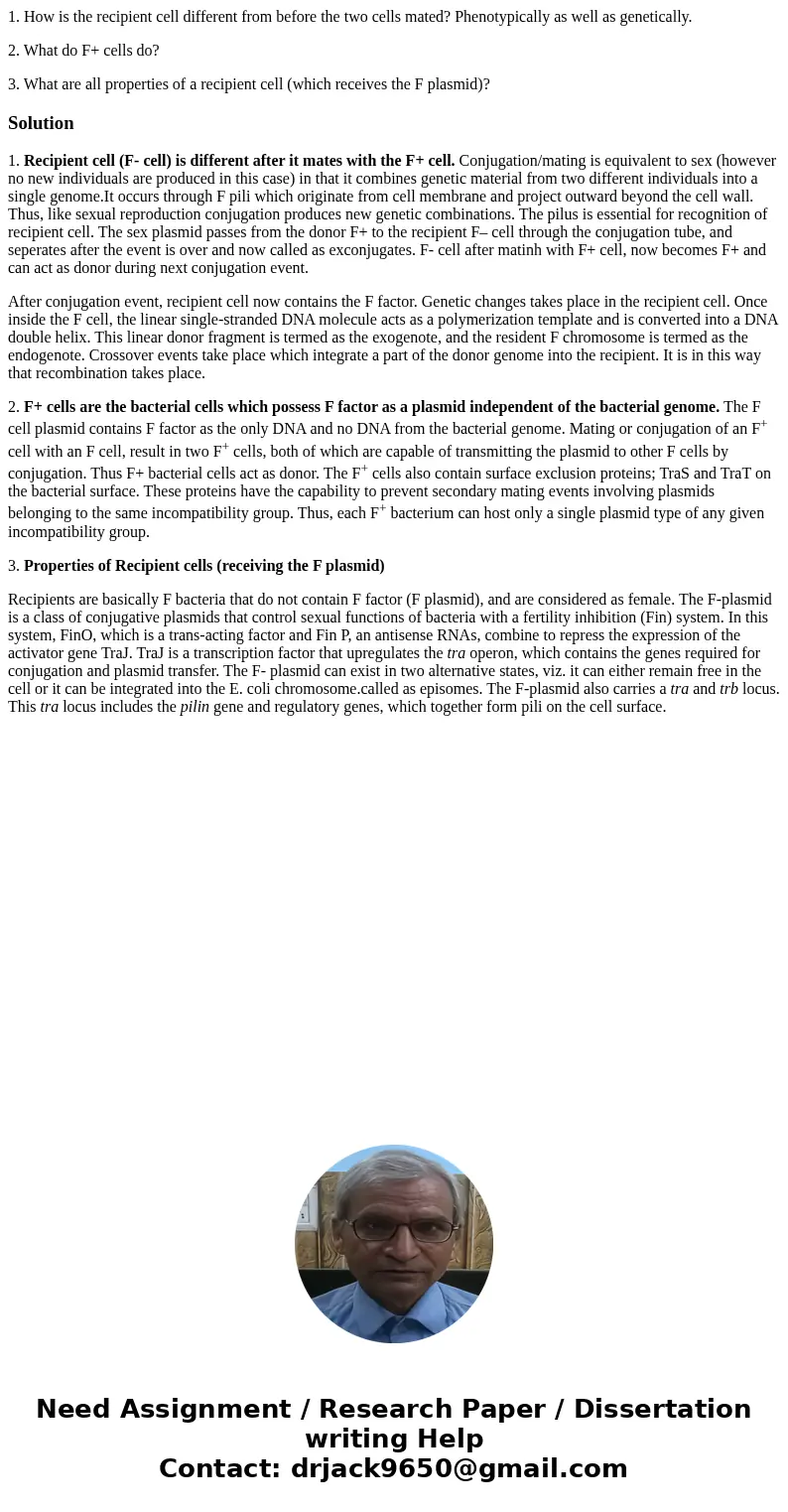1 How is the recipient cell different from before the two ce
1. How is the recipient cell different from before the two cells mated? Phenotypically as well as genetically.
2. What do F+ cells do?
3. What are all properties of a recipient cell (which receives the F plasmid)?
Solution
1. Recipient cell (F- cell) is different after it mates with the F+ cell. Conjugation/mating is equivalent to sex (however no new individuals are produced in this case) in that it combines genetic material from two different individuals into a single genome.It occurs through F pili which originate from cell membrane and project outward beyond the cell wall. Thus, like sexual reproduction conjugation produces new genetic combinations. The pilus is essential for recognition of recipient cell. The sex plasmid passes from the donor F+ to the recipient F– cell through the conjugation tube, and seperates after the event is over and now called as exconjugates. F- cell after matinh with F+ cell, now becomes F+ and can act as donor during next conjugation event.
After conjugation event, recipient cell now contains the F factor. Genetic changes takes place in the recipient cell. Once inside the F cell, the linear single-stranded DNA molecule acts as a polymerization template and is converted into a DNA double helix. This linear donor fragment is termed as the exogenote, and the resident F chromosome is termed as the endogenote. Crossover events take place which integrate a part of the donor genome into the recipient. It is in this way that recombination takes place.
2. F+ cells are the bacterial cells which possess F factor as a plasmid independent of the bacterial genome. The F cell plasmid contains F factor as the only DNA and no DNA from the bacterial genome. Mating or conjugation of an F+ cell with an F cell, result in two F+ cells, both of which are capable of transmitting the plasmid to other F cells by conjugation. Thus F+ bacterial cells act as donor. The F+ cells also contain surface exclusion proteins; TraS and TraT on the bacterial surface. These proteins have the capability to prevent secondary mating events involving plasmids belonging to the same incompatibility group. Thus, each F+ bacterium can host only a single plasmid type of any given incompatibility group.
3. Properties of Recipient cells (receiving the F plasmid)
Recipients are basically F bacteria that do not contain F factor (F plasmid), and are considered as female. The F-plasmid is a class of conjugative plasmids that control sexual functions of bacteria with a fertility inhibition (Fin) system. In this system, FinO, which is a trans-acting factor and Fin P, an antisense RNAs, combine to repress the expression of the activator gene TraJ. TraJ is a transcription factor that upregulates the tra operon, which contains the genes required for conjugation and plasmid transfer. The F- plasmid can exist in two alternative states, viz. it can either remain free in the cell or it can be integrated into the E. coli chromosome.called as episomes. The F-plasmid also carries a tra and trb locus. This tra locus includes the pilin gene and regulatory genes, which together form pili on the cell surface.

 Homework Sourse
Homework Sourse